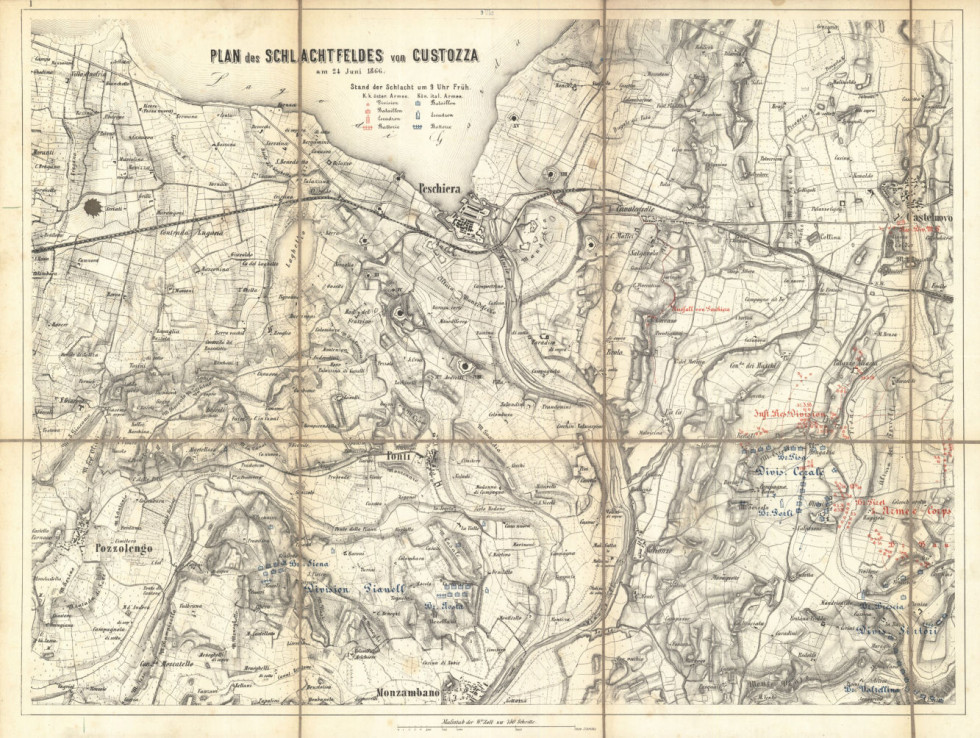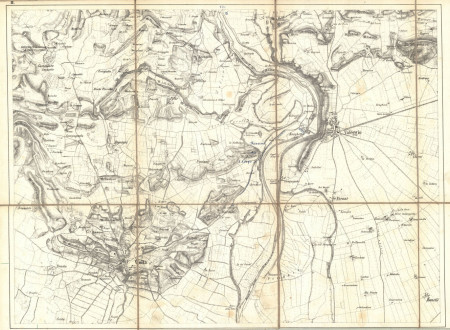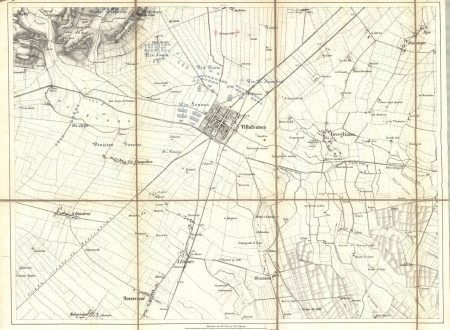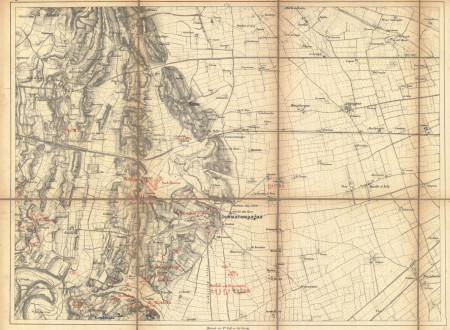Bojno polje bitke pri Custozzi 24. 6. 1866
In mid-19th century, on the eve of the battle of Custoza, which was to lead to a seven-week war between the Austrian Empire, Prussia and their allies, Europe was in turmoil. With the rise of nationalism and territorial aspirations of individual nations, the economic rise of Prussia, and the uncertain political situation in Central Europe, armed confrontation was looming on the horizon. Following the Italian unification, which the Austrians completely ignored and blamed on Berlin and German Confederation, and especially after the appointment of the new Prussian prime minister Otto von Bismarck, who failed to hide his strong anti-Austrian sentiment, the war with Prussia was inevitable.
On account of some rather unwise political decisions, two new fronts were opened for the Austrians; one in Bohemia and the other in Italy. On June 23, 1866, the imperial army marched toward Custoza, where on June 24 around three in the morning the two opposing armies engaged in a fierce battle. Although the Italian general Alfonso Fererro La Marmora had 120,000 men at his disposal, he was only able to get 65,000 of them across the river Mincio, thus tipping the scales in favor of his Austrian opponent, the Archduke Albrecht of Habsburg, and his troops of 75,000 men. Among the Austrian troops there was also the 17th imperial-royal infantry regiment, consisting mostly of Slovenians and fighting on the far right wing of the battle line as part of the reserve infantry division under the command of baron Ruprecht. The battle itself was not well planned ahead and on the hilly terrain soon turned into a chaos with tactical mistakes being made on both sides. One such mistake was the attack of the Austrian cavalry, carried out without orders and causing a total panic among the Italians. It ended with the destruction of one third of the cavalrymen, whose loss later prevented the Archduke Albrecht from tracking his opponent further south. In any case, the Austrians seemed to have more luck and were victorious, both strategically and tactically. The aftermath of the battle was almost 14,000 soldiers killed, wounded or captured on both sides (over 8,000 Italians and almost 6,000 Austrians). Among Slovenians, the battle of Custoza and the Austro-Prussian war in general inspired a number of folk songs, describing the power of firearms, death, and the emperor. Some of them were sung as late as the second half of the 20th century.
Custoza and other military victories won by the Austrians on the Italian battlefields did not carry much weight in the general scope of the Austro-Prussian war. Their Italian campaign ended on July 21 with the battle of Bezzecca. Irrational courage shown by the Austrian infantry had a frightening effect on the Italian army but less so on the Prussians, whose superior firearms mercilessly decimated Austrian infantrymen. The devastating defeat of the Austrians in Koniggrätz on July 1866 forced the Archduke Albert to return back north and the fate of Veneto was decided by means of the Vienna peace treaty. It came under the French rule, but was, due to the will of the people, immediately afterwards given to Italy. The war delivered a heavy blow to the Austrian Empire. The following year, Hungary forced the establishment of the Dual Monarchy; the new arrangement added fuel to the burning “cage of nations” that finally met its end after World War I.
Especially for the Prussians, Austro-Prussian war was a testing ground for the development of new military tactics. It soon became apparent that, in the battlefield, cavalry would no longer be a match against armed infantrymen. Artillery, improved firearms, and the first unsuccessful attempts with bulletproof vests now took center stage. The second half and the end of the 19th century was a time of increasingly bloody testing of new strategies and firearms on every continent, which eventually led to the start of World War I, the war that was supposed to end all wars.
Anja Paulič





